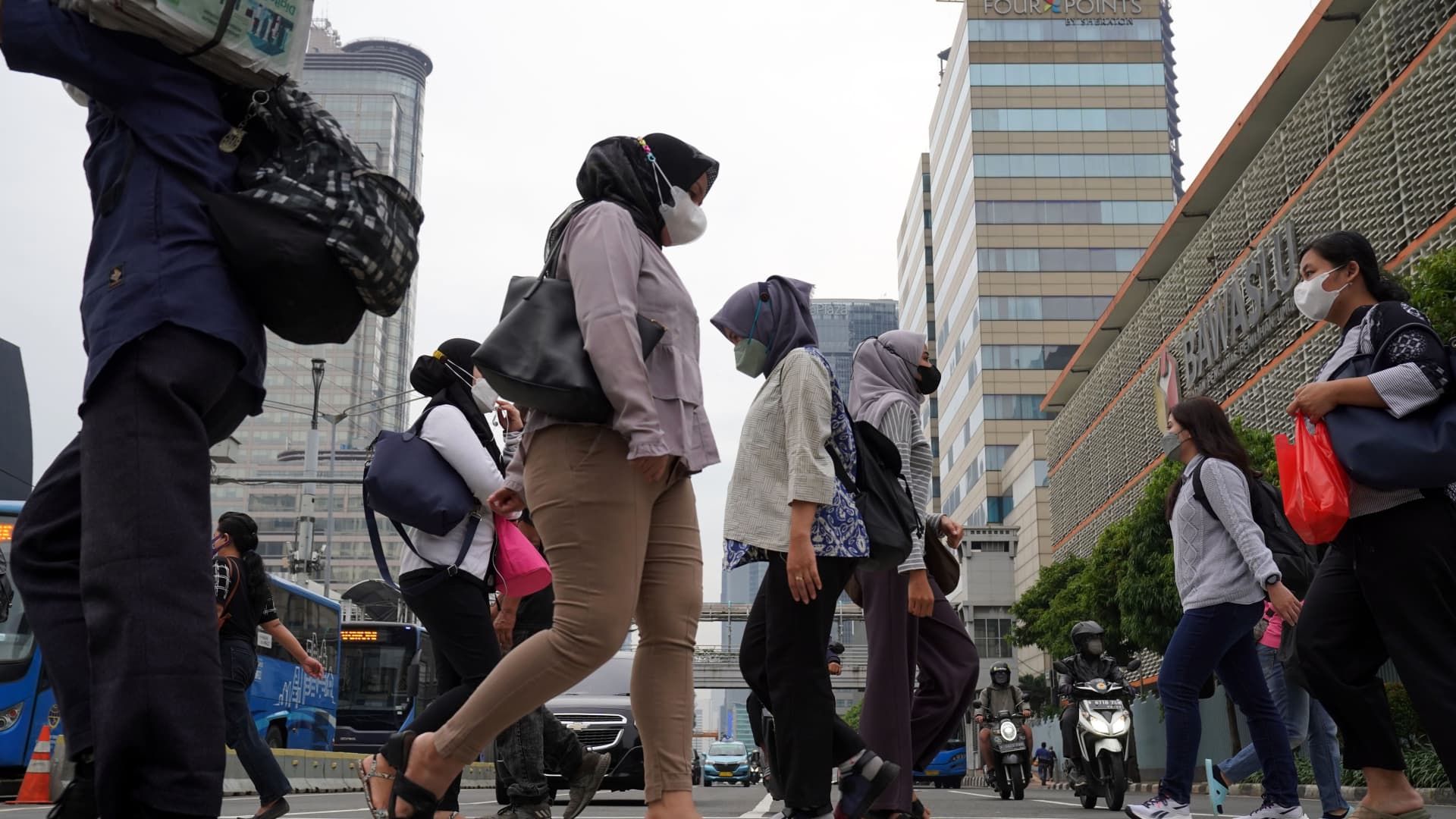Indonesia’s economy saw robust growth in the third quarter, but this could be ‘as good as it gets’

The Indonesian economy grew at the fastest clip in more than a year for the third quarter, but this “might be as good as it gets” for the Southeast Asian nation as global headwinds await, economists said.
On Monday, Indonesia posted year-on-year GDP growth of 5.72% for the July to September quarter, higher than last quarter’s growth of 5.44%.
This was followed by a lift in the consumer confidence index of 120.30 points in October, up from 117.20 points in September.
The rupiah, however, did not rally despite the positive outcomes and remained relatively flat, trading about 0.33% higher on Wednesday.
“Economic growth in Indonesia accelerated in the third quarter, but this is likely to be as good as it gets. We expect lower commodity prices, tighter monetary policy and elevated inflation to drag on growth over the coming quarters,” Capital Economics senior economist Gareth Leather said.
Leather said exports will likely struggle against falling commodity prices and slowing global growth.
Indonesia, a major commodity exporter, has benefited from filling the supply gap caused by the war in Ukraine and once-steep commodity prices resulting from crimped supply chains.
Morning commuters at a pedestrian crossing in the central business district of Jakarta, Indonesia, on Nov. 5, 2021. Indonesia’s economy grew for the fourth straight quarter between January and March as Covid-19 restrictions continued to be relaxed, statistics bureau data showed on Monday.
Dimas Ardian | Bloomberg | Getty Images
The economist said Indonesia’s tighter fiscal spending would also slow demand as the Indonesian government commits to bringing the budget deficit back down. Jakarta is also leaning towards tightening monetary policies to rein in inflation, Leather said.
The Southeast Asian nation is one of the few countries in Asia-Pacific to take it slow with interest rate hikes even though the inflation rate of 5.71% in October is one of the highest in years, exceeding the central bank’s 2% to 4% target. Last month’s inflation was slightly improved from September’s 5.95%.
The rupiah was not buoyed by favorable GDP and consumer confidence results on Monday and Tuesday, mainly because investors are also paying more attention to global movements, Leather said.
“A strong dollar is weighing on all risky assets, not just the rupiah. [It is] hard for the currency to make gains in this environment,” he added.
DBS Bank’s senior economist Radhika Rao said regional currencies are generally drawing direction from the broader U.S. dollar tone and watching for signs of a dial down in the Federal Reserve’s rate hikes.
Barclays senior regional economist Brian Tan was sanguine about Indonesia’s economy, telling CNBC’s “Squawk Box Asia” on Tuesday that despite global headwinds, Indonesia could stand out.
“As we get into next year, things will look a little bit more challenging with the global environment, coming under more pressure,” Tan said.
“But overall, I would say, Indonesia is a very domestically oriented economy and ultimately, that should provide some degree of insulation from what’s happening outside of Indonesia.”
Barclays is expecting a forecasted 5.2% growth rate this year to slip to 5% next year for Indonesia.










